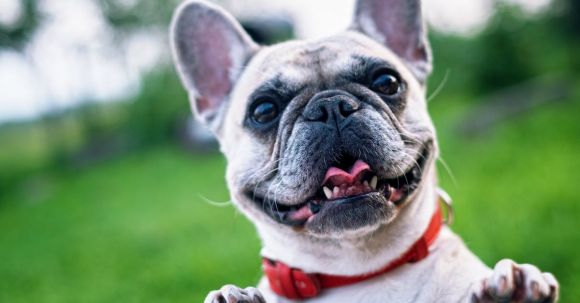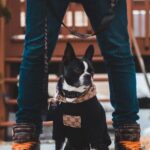The English Bulldog is a unique and iconic breed known for its distinctive appearance and charming personality. One of the key aspects of the breed’s conformation is the angulation of its front and rear ends. Understanding and achieving the ideal angulation is crucial for maintaining the breed’s functionality and overall health.
The Importance of Angulation
Angulation refers to the degree of bend or slope in the joints of a dog’s limbs. It plays a vital role in the dog’s ability to move efficiently and comfortably. Proper angulation allows for smooth and effortless movement, while incorrect angulation can lead to various issues such as lameness, joint problems, and reduced overall performance.
Front End Angulation
The front end angulation of an English Bulldog primarily involves the shoulders and elbows. The ideal front end angulation is when the shoulder blade is long and oblique, meeting the upper arm at an angle of approximately 90 degrees. This allows for sufficient reach and drive in the front legs, enabling the dog to move with balance and power.
Rear End Angulation
The rear end angulation of an English Bulldog focuses on the hips and hind legs. The ideal angulation is when the pelvis is well-angled and the femur bone of the hind leg forms a moderate angle with the pelvis. This configuration allows for strong drive and propulsion, essential for the breed’s ability to move with agility and endurance.
Achieving the Ideal Angulation
Breeding for the ideal angulation in English Bulldogs requires careful selection of parents with correct conformation. Breeders should prioritize dogs with proper structure, ensuring that the desired angulation is passed down to future generations. Regular health screenings and evaluations should also be conducted to identify any potential issues and prevent them from being passed on.
Potential Issues
English Bulldogs are prone to certain health problems, and improper angulation can exacerbate these issues. Over-angulation in the front end can lead to shoulder problems such as osteochondritis dissecans (OCD) and shoulder dysplasia. On the other hand, under-angulation in the rear end can result in hip dysplasia and knee problems like luxating patellas. It is crucial for breeders and owners to be aware of these risks and take necessary precautions.
Balancing Form and Function
While achieving the ideal angulation is essential, it is equally important to maintain a balance between form and function. Breeders should not sacrifice the dog’s overall health and well-being for the sake of achieving a specific angulation. It is crucial to consider the dog as a whole, ensuring that the angulation complements the breed’s unique structure and allows for optimal movement without compromising its health.
Conclusion
Understanding and striving for the ideal front and rear end angulation in English Bulldogs is vital for maintaining their functionality and overall health. Proper angulation allows for efficient and comfortable movement while minimizing the risk of joint problems. Breeders and owners should prioritize selecting dogs with correct conformation and regularly evaluate their health to ensure the breed’s long-term well-being. By balancing form and function, we can continue to preserve the unique charm and vitality of the English Bulldog breed for generations to come.





